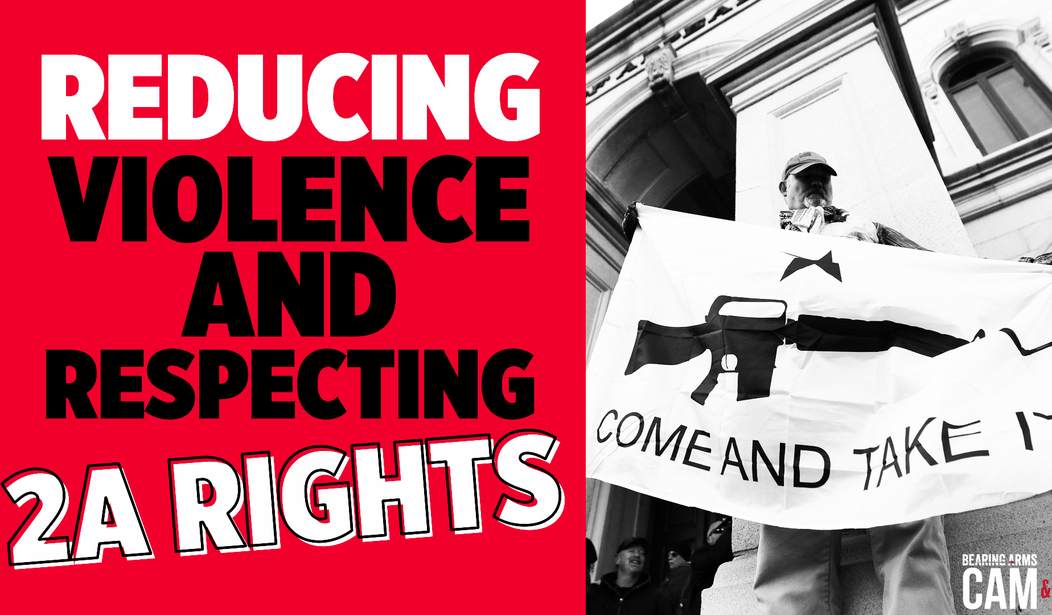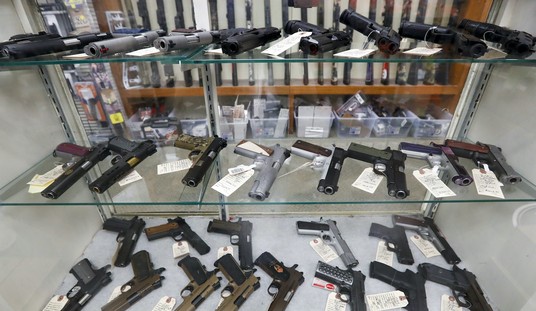According to the authoritarian illogic of the gun control crowd, if you’re not in favor of things like banning “assault weapons” and “large capacity” magazines or making it a crime to carry a firearm in self-defense in the vast majority of publicly-accessible places, you don’t give a damn about reducing gun violence. At the very least, in their eyes you care more about your guns than innocent lives.
It’s all a part of the gun prohibitionists’ efforts to demonize not just the Second Amendment itself, but the tens of millions of Americans who don’t buy into the belief that we can ban and arrest our way to safety by criminalizing the right to keep and bear arms. The choice presented by the gun control groups is a false one, of course, and as a recent ABC News report detailed, the city of Omaha, Nebraska has succeeded in dramatically reducing “gun violence”; not through “universal background checks” or gun bans aimed at legal gun owners, but by focusing on the individuals who are responsible for an outsized portion of the city’s shootings.
The number of reported shooting victims in Omaha, which only includes people who survived, dropped from 246 in 2009 to 121 in 2022, with the lowest at 90 victims in 2017, according to data from the Omaha Police Department.
Citywide shooting incidents involving an individual or group in that same time dropped from 191 to 90, with the lowest at 77 incidents in 2018. (One incident can include multiple victims.) And homicide clearance rates were at 87% in 2022. The Omaha Police Department follows the FBI’s definition of a cleared case, which is by arrest or by exceptional means, like the death of a known suspect.
Overall homicides in Omaha have also gone down over the last 15 years, according to police department data. Those statistics, which do not delineate different types of homicides, show that average annual homicides fell from about 38 from 2007-2012 to about 28 from 2017-2022.
Those are some impressive figures, and gun control activists can’t take credit. Instead, officials in Omaha point to a project known as Omaha 360; a collaboration between community groups, violence intervention programs, local churches, and law enforcement that targets those most likely to commit and be victims of violent crime as well as improving the working relationship between law enforcement and the communities they serve.
Omaha 360 is focused on addressing immediate threats of gun violence as well as the underlying issues that contribute to it.
“In all of our areas, whether it’s education, violence prevention, housing, employment — we identify agencies, organizations, churches, neighborhood groups that are working in that particular area, we bring them together [and] identify what the strengths are,” Barney said.
A main component, according to Barney, is regularly connecting with the community and listening to input. Every Wednesday, Omaha 360 hosts an hour-long public forum with an update from law enforcement and community partners.
Attendees, usually around 80-120 people a week, go over crime statistics, specifically focusing on shootings, Barney said.
“Then we flip gears and say, ‘OK, what’s coming up over the next seven to 10 days?'” Barney said.
If there is something of concern the group is aware of, they mobilize resources preemptively to see who can respond. It could be a local church group or a violence intervention team or another group that can best help diffuse the impending situation.
The meetings are “a way to get everybody in the same room, discussing strategies weekly, with follow up items,” said Gray, the deputy police chief.
Once a month, there is a larger Empowerment Network meeting open to the public. The interconnectedness of participating organizations allows the community to distribute resources without competing for grant funding and overlapping services, Gray said. (Barney said the Empowerment Network is funded by a mix of private and public monies, including from the city and state and philanthropic donations.)
“With 360, you have a moderator in the room,” he said.
Having a moderator also allows the community to work through difficult situations and find common ground, Gray added, and set goals for the hundreds of organizations and groups involved.
The Empowerment Network and Omaha 360 also focus on reentry programs and employment opportunities for young people through initiatives like “Step Up Omaha!” that help 14-21-year-olds find jobs and work experience opportunities, according to the Empowerment Network.
Lack of employment was a top issue among young people that the group spoke with, Barney said, especially during the summer months.
“We’ve seen that given the opportunity, they will maximize that opportunity,” he said. “We just need more of that.”
“It really comes back to those poverty issues — housing, unemployment, education,” he told ABC News. “We really have gone upstream to address those issues, while also building better communication channels with the police department.”
While strategies like this aren’t exactly new (as we discuss on today’s Bearing Arms’ Cam & Co, they date back to at least the mid-1990s and Operation Ceasefire in Boston), they can sometimes be undone by professional and personal conflicts between stakeholders, and it can be difficult to maintain these programs when a new mayor is elected or a city council changes hands. In that sense, it’s spectacular that Omaha has managed to keep this program in place and build on it over the years despite the large number of stakeholders involved, and the impact is undeniable.
Violent acts aren’t committed by inanimate objects. Behind every armed robbery, carjacking, home invasion, or drive-by shooting there’s a flesh-and-blood human being with a beating heart, and the best way to combat and prevent violent crime is to focus on those individuals actually committing them. In many cases, lives can be turned around, but when they can’t efforts like Omaha 360 and Operation Ceasefire help to ensure that there are serious consequences for serious offenses. Before prosecutors can charge someone with homicide, police have to make an arrest, and the fact that Omaha’s homicide clearance rate is almost 90% is strong evidence that residents of high-crime neighborhoods and eyewitnesses to violent crime are talking to police rather than seeing them as the enemy. Nationwide, the homicide clearance rate is closer to 50%, and I’d argue that when criminals know they’re not likely to get away with murder at least some of them are going to think twice before they pull the trigger in the first place.
The gun control movement is fundamentally based on the idea that the only real way to address violent crime is to turn the right to keep and bear arms into a non-violent, possessory offense. Omaha is proof that if you really want less crime, making legal gun owners and their Second Amendment rights the target isn’t the right solution. Instead, we have to focus on the relatively small number of people in any given community who are actually responsible for the violence. Seems like a pretty simple idea, even if it will never be an acceptable strategy for gun prohibitionists.









Join the conversation as a VIP Member